
Topics
Guests
- Robert Alvarezformer senior policy adviser to the U.S. Secretary of Energy and now a senior scholar at the Institute for Policy Studies. His new report is called “Spent Nuclear Fuel Pools in the US: Reducing the Deadly Risks of Storage.”
- Aileen Mioko Smithexecutive director of the group Green Action.
Almost three months after the earthquake and tsunami that triggered a nuclear disaster in Japan, new radiation “hot spots” may require the evacuation of more areas further from the damaged Fukushima Daiichi nuclear power facility. Japan’s Nuclear and Industrial Safety Agency recently admitted for the first time that full nuclear meltdowns occurred at three of the plant’s reactors, and more than doubled its estimate for the amount of radiation that leaked from the plant in the first week of the disaster in March. “What they failed to mention is that they discharged an equally large amount into the ocean,” says our guest Robert Alvarez, former senior policy adviser to the U.S. Secretary of Energy. “As [the radiation] goes up the food chain, it accumulates. By the time it reaches people who consume this food, the levels are higher than they originally were when they entered the environment.” Alvarez also discusses his new report on the vulnerabilities and hazards of stored spent fuel at U.S. reactors in the United States. Then we go to Tokyo to speak with Aileen Mioko Smith, executive director of the group Green Action. She says citizens leading their own monitoring efforts are calling for additional evacuations, especially for young children and pregnant women. [includes rush transcript]
Transcript
JUAN GONZALEZ: Almost three months after the earthquake and tsunami that triggered a nuclear disaster in Japan, government officials say they may evacuate more towns affected by radiation. New monitoring data shows “hot spots” of elevated contamination farther away from the stricken Fukushima Daiichi nuclear power plant.
The new hot spots were announced after authorities conceded on Monday the crisis at the stricken nuclear power facility was far more severe than they had previously admitted. Japan’s Nuclear and Industrial Safety Agency more than doubled its estimate for the amount of radiation that leaked from the plant in the first week of the disaster in March. The agency has also admitted for the first time that full nuclear meltdowns occurred at three of the plant’s reactors.
A recent law school graduate, Takanori Eto, is the first to file a lawsuit against the Japanese government over its handling of the crisis.
TAKANORI ETO: [translated] There are dangers inherent in the government’s nuclear policy. From the very beginning, there were also mistakes made. We also found out that, even after the accident, the Japanese government was unable to properly protect its people. So I decided, rather than remain silent, I needed to bring to light these lapses in judgment in a lawsuit.
AMY GOODMAN: That was Takanori Eto, the first person to sue the Japanese government over its handling of the nuclear disaster.
The New York Times reports harsh economic conditions are driving laborers to Fukushima for work at the plant despite the dangers. Earlier this week, a robot sent into the Fukushima Daiichi nuclear power facility detected the highest levels of radiation since the onset of the crisis. A nuclear review by the U.S. power industry, convened this week, is weighing safety upgrades at domestic plants in the wake of Japan’s reactor crisis.
To discuss the state of nuclear power plants in Japan and the United States, we’re joined in Washington, D.C., by Robert Alvarez, former senior policy adviser to the U.S. Secretary of Energy, now a senior scholar at the Institute for Policy Studies. We’re also joined in Tokyo by Aileen Mioko Smith, executive director of the group Green Action.
We welcome you both to Democracy Now! Bob Alvarez, start off by talking about what we know at this point and the fact that just this week we’re hearing there were three nuclear meltdowns. What does this mean?
ROBERT ALVAREZ: Well, I think it means that the accident was much more prompt and severe, and its radiological consequences are going to be — unfold in a more serious way. As you mentioned earlier, the contamination of land nearby, or not so nearby, is proving to be quite extensive. The reports that I’ve seen suggest that land contamination, in terms of areas that are technically uninhabitable because of cesium-137 contamination, is roughly 600 square kilometers, or about 17 times the size of Manhattan Island.
JUAN GONZALEZ: And Aileen Mioko Smith, the reaction of the public to this increased contamination much further on than the exclusion zone, although it’s in hot spots — what has been the reaction to the government’s failure to make this clear early on?
AILEEN MIOKO SMITH: Well, there’s incredible concern, especially among parents in Fukushima prefecture. But now spreading is concern among parents in Tokyo, which is quite a far way from Fukushima. Mainly, what’s been happening is that citizens have been monitoring. And after they find high levels, they demand that the local authorities and the government look at those contaminated areas, and then the government looks, and it is contaminated. So it’s very much citizen-oriented. There are people going in all the time. There are radiation monitors all over. Parents are measuring. Mothers are measuring. University professors on weekends are measuring.
AMY GOODMAN: And a new study is being done by the prefecture, Aileen?
AILEEN MIOKO SMITH: Yes, we’re very concerned that a health study is starting at the end of this month. This is concerning the effects of the Fukushima residents, on the prefectural citizens. It’s headed by a Dr. Shunichi Yamashita, who’s at the Atomic Bomb Research Institute. He’s the radiological health safety risk management adviser for the prefecture. He’s widely shown on national TV. He speaks widely in the prefecture, always saying there’s absolutely no concern with the levels of radiation in Fukushima. He says that mothers, even mothers exposed to 100 millisieverts, pregnant mothers, will not have any effect, health effect. Remember the number 100. Compared to that, the Soviet Union required a mandatory evacuation during Chernobyl at five millisieverts. This doctor is quoted as saying, “The effects of radiation do not come to people that are happy and laughing. They come to people that are weak-spirited, that brood and fret.” This is a direct quote. And he’s heading the study. And so, the citizens in Fukushima are very concerned.
AMY GOODMAN: Bob Alvarez, you’ve come out with a new report. What are your main findings?
ROBERT ALVAREZ: Well, my report dealt with the vulnerabilities and hazards of stored spent fuel at U.S. reactors in the United States. The United States shares similar designs, reactor designs, as the Japanese reactors at the Fukushima Daiichi station. And if you watched the accident unfold at the Daiichi station, the explosions basically showed you that the spent fuel pools were exposed to the open sky. We, in the United States, are currently storing on the order of three to four, five times more radioactivity in our pools than in Japan, and that the amount of radioactivity that we are storing in unsafe, vulnerable pools constitutes the largest concentrations of radioactivity on the planet.
In 2008, my colleagues and I issued a report, an in-depth study, following the 9/11 attacks. We became very concerned about the vulnerability of these pools after those attacks, and we pointed out that if somebody or something were to cause the water to drain, it would lead to a catastrophic radiological fire that could render an area uninhabitable far greater than that created by Chernobyl. Chernobyl created an area that’s currently uninhabitable that’s approximately the size of half of the state of New Jersey.
The fact of the matter is, is that we don’t have a final resting place for these wastes. We’ve been trying to find a disposal site for these wastes for the last 55 years. And the reality is that these wastes are going to continue to accumulate at U.S. sites, and the reactor operators are going to continue to squeeze spent fuel into pools that have nowhere near the level of protection of reactors. I mean, these pools are contained in structures that you would find at car dealerships or big box stores. And, for example, the Nuclear Regulatory Commission does not require the pools to have backup diesel generators if they lose offsite power. It’s very important to keep the pools cool, and they do pose some very, very serious risks. They are, in my opinion, the most serious vulnerability of nuclear power that we have in the United States.
JUAN GONZALEZ: But what are the alternatives, given the fact, obviously, that the United States government, like several other governments around the world, are determined to continue to expand the use of nuclear power? What are the alternatives for storing the spent fuel?
ROBERT ALVAREZ: Well, I think that there are different — there’s a big difference between plans and reality. I think that the expansion of nuclear power in this country, if it occurs at all, is going to be rather modest and minor. We have to be concerned about the 104 reactors that are operating and the generation of that material, and that we should be doing what Germany did 25 years ago, which is to thin out the pools, use them for the original purpose they were intended, which is to allow the spent fuel to cool off for several years, and then to place the spent fuel into dry, hardened storage modules. And this significantly reduces the hazards of these spent fuel pools.
AMY GOODMAN: You say that what is recommended for expansion in the United States is relatively minor, Bob Alvarez, but I think many were shocked that President Obama has been pushing for something that presidents haven’t pushed for for decades. I mean, the last nuclear power plant in this country built, what, some 30, 40 years ago. I mean, Juan, you’ve written about President Obama, before he was president, getting a good deal of support from the nuclear industry, and he never said he wasn’t going to push for this, but they’ve been rather quiet about it right now, since the catastrophe in Japan.
ROBERT ALVAREZ: Well, I think a lot of this is rhetorical. I think that — I look at it as the equivalent of throwing nuclear candy at political supporters, or even political enemies who you’re trying to win over. The fact of the matter is, is that nuclear power is not going to have a chance in this country, at all, unless it has unfettered access to the United States Treasury. This is not going to happen. The House, for example, recently enacted the appropriations legislation for fiscal year 2012 and totally spurned Obama’s request to expand loan guarantee authority. In other words, the U.S. government would guarantee the loans, but the loans themselves would come out of the U.S. Treasury. I don’t think that the Congress right now has the stomach to open up the Treasury for reactors that are going to cost on the order of $10 billion apiece.
You also have to keep in mind that while he has been vocally supportive of nuclear power and has done things like try to seek expanded loan guarantee authority, he’s also pulled the rug out from under the nuclear industry by canceling the Yucca Mountain disposal site. And so, I think that we have to sort out, as we do with a lot of things the President does, the difference between what he says and what happens.
JUAN GONZALEZ: Aileen Mioko Smith, I’d like to get back to the disaster in Japan for a moment. Greenpeace has been reporting that the contamination levels — dangerous contamination levels in the ocean go out as — they found it as far as 50 miles out from the shore. What has been happening with the fishing industry in Japan and the reaction to the possible contamination of huge swaths of the ocean off the coast?
AILEEN MIOKO SMITH: Yes, the ocean contamination is very serious. There are estimates that it’s 10 times the release that was — that compared to Chernobyl into the Baltic Sea. So it’s very serious. And the National Fisheries Association came out very early on after the accident demanding the closure of all nuclear power plants in Japan. This is an incredible statement, because the industry has never been concerned about nuclear power before. Just right now, TEPCO is — the amount of contaminated water on site is building and building, and there’s intention to dump more. And the industry is opposing it right now.
AMY GOODMAN: Bob Alvarez, can you talk about this contamination of the oceans?
ROBERT ALVAREZ: Yes. As you know, the Japanese government, in its report to the IAEA, said it had underestimated the amount of radioactivity released to the atmosphere during the first week and that it amounts to roughly 40 million curies of radioactivity. What they failed to mention is that they discharged an equally large amount into the ocean, about 20 million curies, and that the — what they’re counting here is the radioactive iodine and radioactive cesium.
Radioactive cesium is of most concern because it has a half-life of 30 years, it gives off potentially dangerous external penetrating radiation, and it is absorbed into the food chain and other biota as if it were potassium. So as it goes up the food chain, it accumulates, and by the time it reaches people who consume this food, the levels are higher than they originally were when they entered the environment. There is a stretch of ocean floor offshore from the reactor site that’s about 300 kilometers wide — I don’t recall, several kilometers — 300 kilometers long, rather, and several kilometers wide of cesium-137. That’s a very, very serious concern because of the fact that this is really a fundamental element of the aquatic food chain for the food supply for the country of Japan.
AMY GOODMAN: Aileen Mioko Smith, can you talk about the changing of what is considered acceptable radiation limits at the schools?
AILEEN MIOKO SMITH: Yes. There’s been a big fight. The Fukushima residents, the parents, came down in busloads to Tokyo on March — excuse me, May 23rd and met with the Ministry of Education. The whole building was encircled by people, completely encircled, and these negotiations went on inside the building. It was very intense. And the parents made the ministry say that they would aim for returning to back down to the one millisievert standard as much as possible, compared to the twentyfold increase that they were allowing in Fukushima prefecture for the children. These levels that they have been allowing, it’s officially still in place. They’re huge levels. Twenty millisieverts is much higher than what triggers a radiation-controlled area inside nuclear power plants. For example, in Japan, workers have been recognized for compensation, getting leukemia or whatever, as low as five, a little bit over five millisieverts. And this standard for children is fourfold that annually. Anyway, we demanded that it be brought down as close to one. They agreed. And then it turns out that what they’re saying is, just during the time they’re a school, they can reach that maximum one. So, of course, you know, a child’s life is at school, going to and from school, etc., so the government is still allowing very high levels for children.
JUAN GONZALEZ: Bob Alvarez, I’d like to ask you about this problem that the public confronts of governments misrepresenting, or sometimes actually lying, to the public in terms — when these major disasters occur. I mean, going back, from Three Mile Island, Chernobyl, most recently the BP spill in the Gulf, or the collapse of the Twin Towers and the health effects for the public, and now here we have in Japan — the tendency of government always to withhold information that they immediately have from the public. Doesn’t this eventually lead to just general mistrust of people to what the government is saying in these disasters?
ROBERT ALVAREZ: Oh, yes, of course. I think the nuclear industries, particularly in the United States and elsewhere, Russia, Japan, have a very long history of withholding information and misleading the public about the hazards of their activities. And in this country, it went on for many years, and during the open-air bomb testing program, for example. The nuclear industry enjoys this rather unique status because of its origins in the nuclear weapons program and that it’s a system that has been fostered under conditions of secrecy, isolation and privilege, and they do not consider it in their interest to be candid with the public. I used to work in the Energy Department for six years and was a former, I guess you would say, nuclear insider. And the mindset that I encountered there was that they — the people who were reluctant to reveal candid information about the nature of the hazards from these activities — was that we can’t scare people, scaring people is worse than telling them the truth. And I think that that’s a fundamental — a fundamentally wrongheaded assumption.
AMY GOODMAN: Bob Alvarez, how do you respond to the U.S. nuclear industry saying it doesn’t expect any health problems among Japanese people as a result of the nuclear accident?
ROBERT ALVAREZ: I just think that’s arm waving. It’s public relations arm waving, because we won’t know what the full truth will be for decades to come. We do know that based on past accidents, such as Chernobyl, such as the experience we’ve had with our nuclear workers in this country over the last 50 years, is that there is bound to be a significant increase in the risk of cancer, and most likely other diseases.
AMY GOODMAN: And you say Japan is equal to or worse than Chernobyl, the Fukushima Daiichi plant?
ROBERT ALVAREZ: That’s correct, because if — the Soviet Union and Russia basically have claimed that about 50 million curies of radioactivity were released to the environment — this is roughly comparable to what the Japanese government has currently admitted — and that this site continues to release significant amount of radiation in the atmosphere, nowhere near as large as it did during the first week or two, but it’s still quite significant.
The other issue here is the workers on the site. I was astounded to learn that some 5,000 workers have positive evidence of internal exposure to radioactive materials. This is a huge number of people to be exposed over such a short period of time. In the U.S. nuclear weapons program, which operated at a sort of a brisk pace for nearly 50 years, this is roughly comparable to what all workers at nuclear weapons sites during that period were recorded to have received from internal exposures. I think that the impact on the workforce, the emergency responders, is going — is something we need to watch very closely, because that’s going to give us some important clues of what we might expect in terms of the health consequences to the public.
JUAN GONZALEZ: And yet, Aileen Mioko Smith, some of the reports that we’ve had here, the news reports, say that there’s no trouble recruiting people to go and work on the cleanup because of, obviously, the high pay that they’re offering and also the economic dislocation that occurred as a result of the tsunami and of the nuclear accident itself.
AILEEN MIOKO SMITH: Yes, that’s correct. And we’re very concerned for the health of the workers. And as Bob Alvarez pointed out, now the knowledge that so many workers have received internal exposure, this is also a concern for the public, and citizens are very concerned about that. The Japanese government refuses to recognize any potential internal exposure of the residents of Fukushima. We’ve been addressing this about the children. Citizens have demanded whole body counts — a few have actually been able to get them — at the Atomic Bomb Research Institute, and are refused the results. They’re just told, “No problem.” They don’t — aren’t given the data. And they’re demanding that the data be released. So that is a great concern.
And the other thing I want to point out is this is still an ongoing accident. That issue about the spent fuel pool that Bob Alvarez addressed on the U.S., at Fukushima, as you know, Unit 4 is there with that exposed spent fuel pool. We’re concerned about possible aftershocks. There are people that are still living 12 miles outside of the radius of the plant. They’re only hot spots that have been evacuated outside of that larger area of 20, 30 kilometers. And that’s why we’re demanding evacuation, and the demand has now become very clear, and we’re pushing for that to happen, especially for pregnant women and young children.
AMY GOODMAN: Bob Alvarez, nuclear power globally — the U.S. says it’s moving forward. But Germany, Angela Merkel has been forced to turn back on that, and they say they’re not going to move forward with nuclear power plants. Same with Switzerland. Saudi Arabia says they’re going to build 30 new nuclear power plants?
ROBERT ALVAREZ: Well, as I said, plans and statements and announcements oftentime are different from what actually happens. The fact of the matter in the United States is that we no longer have any companies or capabilities or infrastructure to build nuclear reactors. We have to depend on nations such as Japan and France to do that. Japan is the — right now the only producer of forgings for reactor vessels. Nuclear engineers in this country are almost like Confederate war veterans; there are very few actual U.S. citizens who go to college to become nuclear engineers, because it’s considered a dead-end occupation. So, we don’t really have the infrastructure. The skilled knowledge base that we need to have any significant expansion of nuclear power is not there.
And I think that the Fukushima accident has really had a major body blow to the world nuclear industry. You have to understand that Japan, with its 54 reactors, represents the third-largest number of reactors of a country in the world. They’re number three. And for Japan now to announce that it’s going to shut down its reactors by next spring, albeit perhaps for temporary reasons, is a major signal to other countries who either have a large reactor fleet or those who are contemplating building more.
I think Saudi Arabia’s desire to have 30 reactors is something that’s not necessarily going to be easily achievable, because of the fact that the United States serves essentially as a gatekeeper for any such deal of that nature. I think that Saudi Arabia is looking to establish a nuclear infrastructure in order to allow it to have the capability down the road to have nuclear weapons. Building 30 reactors in Saudi Arabia, in a country which really doesn’t have much water to speak of — and reactors are extremely water-intensive — doesn’t make a lot of sense. And then if you look at the price tag for building these reactors in a place like Saudi Arabia, you’re looking at an expenditure of somewhere between three to five trillion dollars to do this. So I think some of this — some of these announcements and plans are just what they are, announcements and plans.
AMY GOODMAN: And finally, on Vermont, because it could become the first legislature in the country to shut down a nuclear power plant, the Vermont Yankee plant, but Entergy, the owner, is fighting hard, trying to sue them to stop them from doing this. The comparison of Vermont Yankee to the Fukushima plant?
ROBERT ALVAREZ: Well, the Vermont Yankee plant is a General Electric boiling water Mark 1 reactor, which is the exact same design as those at the Fukushima Daiichi site. It has more radioactivity in its spent fuel than all of the spent fuel rods at the four troubled reactors, wrecked reactors, at Fukushima. It’s 42 years old. And this is a reactor which — I think whose time has come to close. It should not be looked upon as just an ATM machine for a multi-tiered holding company that makes sure that it can make as much money as possible. You know, this reactor was purchased for pennies on the dollar. And companies like Entergy, who operate in these deregulated environments, are loath to do things that would require significant safety upgrades. For example, if the state required them to build cooling towers and comply with the Clean Air Act and to really build new modern ones, I think the capital expenses alone would drive Entergy to shut down that reactor. So, I think that the battle lines are drawn there, and I think that we’re going to see an increasing battle between states who appear to be on a collision course with the federal government over the future of nuclear power.
AMY GOODMAN: We want to thank you very much for being with us, Robert Alvarez —
ROBERT ALVAREZ: Thank you.
AMY GOODMAN: — former senior policy adviser to U.S. Secretary of Energy, now a senior scholar at the Institute for Policy Studies. His new report is called “Spent Nuclear Fuel Pools in the US: Reducing the Deadly Risks of Storage.” We’ll link to that at democracynow.org. And Aileen Mioko Smith, thank you so much for being with us again, this time from Tokyo. She is executive director of the group Green Action.

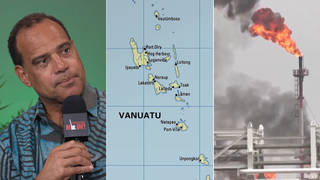
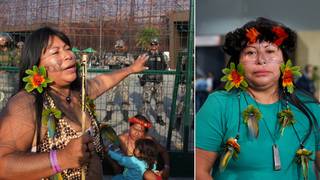
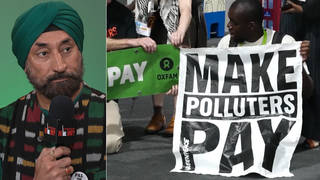
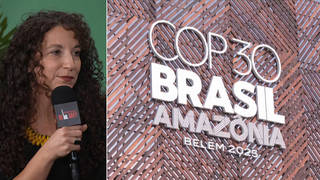





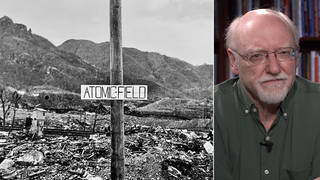

Media Options